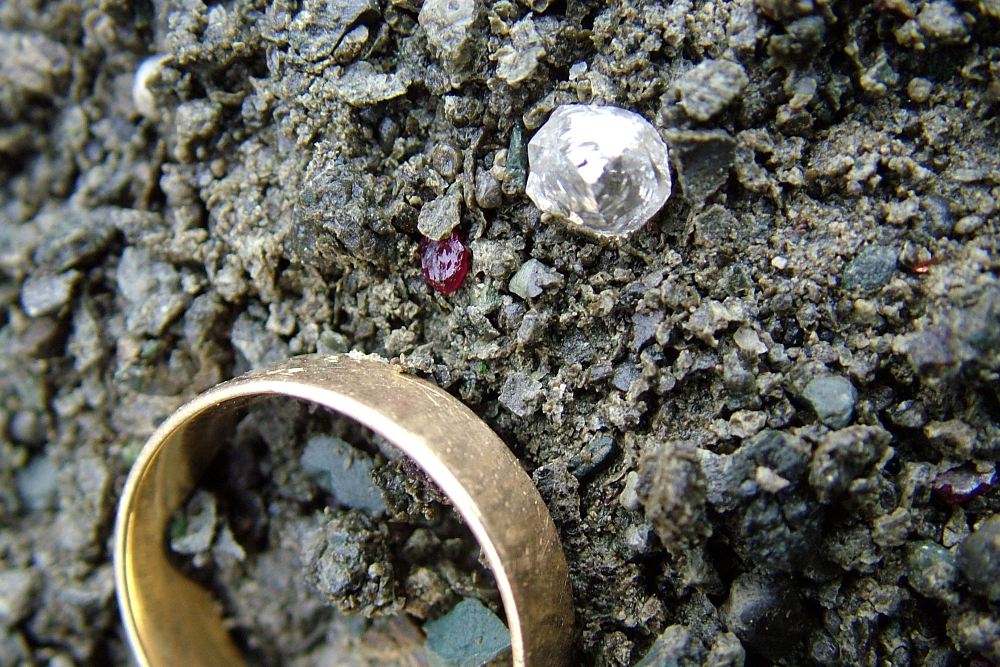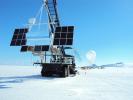Groundbreaking RESEARCH
Scientists crack the code of what causes diamonds to erupt
July 26, 2023
Share
![[Heavy machinery operating within a major diamond mine in South Africa. Photo by Dr Tom Gernon, University of Southampton]](/gazette/sites/gazettewww/files/assets/stories/2020/DiamondMine_1000x667.jpeg)
A recent discovery by a team of international researchers has identified the breakup of tectonic plates as the main driving force behind the generation and eruption of diamond-rich magmas from deep inside the Earth. Their findings could shape the future of the diamond exploration industry, informing where diamonds are most likely to be found.
Diamonds, which form under great pressures at depth, are hundreds of millions, or even billions, of years old. They are typically found in a type of volcanic rock known as kimberlite. Kimberlites are found in the oldest, thickest, strongest parts of continents – most notably in South Africa, home to the diamond rush of the late 19th century. But how and why they got to Earth’s surface has, until now, remained a mystery.
Christopher Spencer (Geological Sciences and Geological Engineering) collaborated with researchers from the University of Southampton, the University of Birmingham, the University of Potsdam, Portland State University, Macquarie University, the University of Leeds, and the University of Florence to examine the effects of global tectonic forces on these volcanic eruptions spanning the last billion years. Their findings were published in the journal Nature.
![[Diamond ore rock (kimberlite) showing dark crystals (olivine) and fragments of rock that were formed during explosive volcanic eruptions. Photo by Dr Tom Gernon, University of Southampton]](/gazette/sites/gazettewww/files/assets/stories/2020/kimberlite_1000x667.jpeg)
"The pattern of diamond eruptions is cyclical, mimicking the rhythm of the supercontinents, which assemble and break up in a repeated pattern over time," says Dr. Tom Gernon, Associate Professor of Earth Science and Principal Research Fellow at the University of Southampton, and lead author of the study. "But previously we didn’t know what process causes diamonds to suddenly erupt, having spent millions – or billions – of years stashed away 150 kilometres beneath the Earth’s surface."
To address this question, the team used statistical analysis, including machine learning, to forensically examine the link between continental breakup and kimberlite volcanism. The results showed the eruptions of most kimberlite volcanoes occurred 20 to 30 million years after the tectonic breakup of Earth’s continents.
"Using geospatial analysis, we found that kimberlite eruptions tend to gradually migrate from the continental edges to the interiors over time at rates that are consistent across the continents," said Dr. Thea Hincks, Senior Research Fellow at the University of Southampton.
Geological processes
![[A 'mantle nodule', a fragment of rock that was ripped from the base of the continental plate during these energetic eruptions. The photograph was taken under a microscope and measures about 4cm across. Photo by Dr Tom Gernon, University of Southampton]](/gazette/sites/gazettewww/files/assets/stories/2020/MontanaMantleNodule_1000x667.jpeg)
This discovery prompted the scientists to explore what geological process could drive this pattern. They found that the Earth’s mantle – the convecting layer between the crust and core – is disrupted by rifting (or stretching) of the crust, even thousands of kilometres away. The result is a domino effect can explain how continental breakup leads to formation of kimberlite magma. During rifting, a small patch of the continental root is disrupted and sinks into the mantle below, triggering a chain of similar flow patterns beneath the nearby continent.
“The confluence of numerous lines of evidence from paleogeography, geodynamic simulations, and isotope geochemistry of kimberlites require a dramatic rethinking of the previous paradigm and the newly presented model satisfies all the evidence,” said Dr. Spencer, Associate Professor at Queen’s, and study co-author.
The team’s research could be used to identify the possible locations and timings of past volcanic eruptions tied to this process, offering valuable insights that could enable the discovery of diamond deposits in the future.
Dr. Gernon said the study also sheds light on how processes deep within the Earth control those at the surface. "Breakup not only reorganizes the mantle but may also profoundly impact Earth's surface environment and climate, so diamonds might be just a part of the story."

A version of this article originally appeared on the University of Southampton website.

![[SNO+ detector at SNOLAB]](/gazette/sites/gazettewww/files/styles/xsjpg1x3to2/public/2024-04/McDonald-Institute-funding-1800x1200-Gazette.jpg?itok=6Lwe0LRj)

